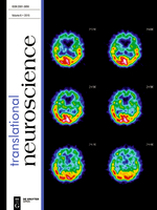 New article summarizes myriad anatomical, physiological, preclinical, and clinical data concerning WElkins' head-neck cooling technology as a potential treatment for mTBIs, particularly in the context of contact sports. A new report, published last week in Translational Neuroscience, provides an excellent review of the underlying science and research behind selective brain cooling and its potential for concussion injury in contact sports. WElkins' Cooling Headliner is featured in the piece, as are data from past studies using the device. The Company did not sponsor the effort, but is grateful for the thoughtful analysis by a talented, multidisciplinary team from the University of Illinois at Urbana-Champaign (Departments of Molecular and Integrative Physiology, Mechanical Science and Engineering, and Electrical and Computer Engineering), Carle Foundation Hospital (Neurosurgery, Internal Medicine and Sports Medicine), Beckman Institute (Thermal Neuroscience Laboratory), and Mayo Clinic (Laboratory Medicine and Pathology). Keep reading below for the abstract and a link to the full article. AbstractEmerging research on the long-term impact of concussions on athletes has allowed public recognition of the potentially devastating effects of these and other mild head injuries. Mild traumatic brain injury (mTBI) is a multifaceted disease for which management remains a clinical challenge. Recent pre-clinical and clinical data strongly suggest a destructive synergism between brain temperature elevation and mTBI; conversely, brain hypothermia, with its broader, pleiotropic effects, represents the most potent neuro-protectant in laboratory studies to date. Although well-established in selected clinical conditions, a systemic approach to accomplish regional hypothermia has failed to yield an effective treatment strategy in traumatic brain injury (TBI). Furthermore, although systemic hypothermia remains a potentially valid treatment strategy for moderate to severe TBIs, it is neither practical nor safe for mTBIs. Therefore, selective head-neck cooling may represent an ideal strategy to provide therapeutic benefits to the brain. Optimizing brain temperature management using a National Aeronautics and Space Administration (NASA) spacesuit spinoff head-neck cooling technology before and/or after mTBI in contact sports may represent a sensible, practical, and effective method to potentially enhance recover and minimize post-injury deficits. In this paper, we discuss and summarize the anatomical, physiological, preclinical, and clinical data concerning NASA spinoff head-neck cooling technology as a potential treatment for mTBIs, particularly in the context of contact sports.
Link to Full Article: Translational Neuroscience (open access) Comments are closed.
|

 RSS Feed
RSS Feed
